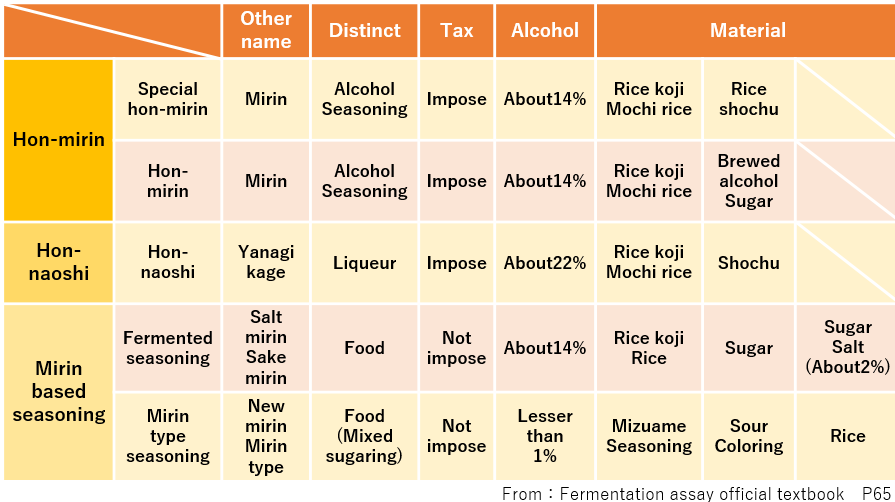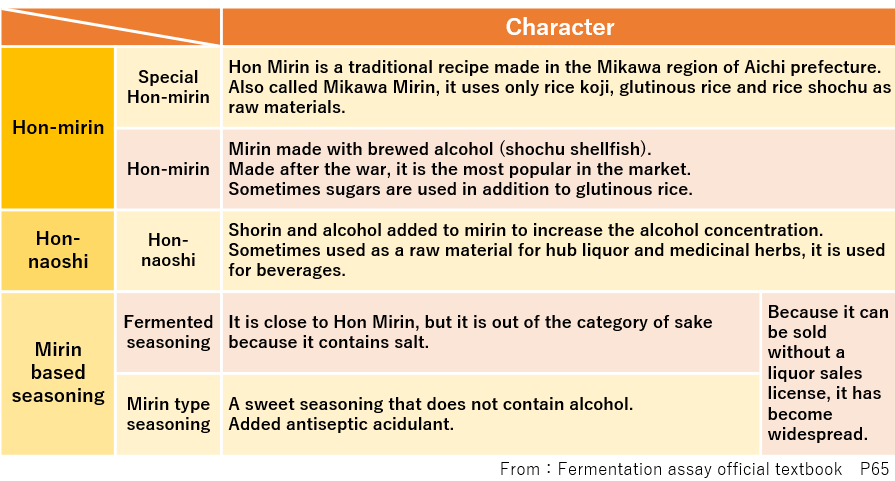Home>Food>Mirin
Mirin
Mirin is mainly used as a seasoning, but it was originally used as a premium sake.
Even today, Toso, which is drunk during New Year's Day in Japan, sometimes uses mirin in addition to sake.
Mirin is made from rice and rice を with shochu.
The sweetness of mirin is due to the glucose produced by the mold by fermentation.
Origin
The origin of Mirin is currently unclear, and there is a theory.
There was a sweet taste sake called Mirin in China.
There is a theory that Mirin was born in Japan during the Warring States Era.
Even now, in Zhejiang Province in China, there is a Mitusyu with a sugar content of more than 20%, and there is also a Rinpansyu which was the source of Shaoxing liquor.
In this way, drinks close to Mirin are prospering in China, and this theory is influential.
In Japan, according to the Komai Diary in 1593, there was a record at that time that mirin was called honey shochu and was consumed by the upper classes as a sweet and precious sake.
Since the late Edo period, it has been used as a seasoning for soba soup and so on.
Kind
Mirin can be broadly divided into “Hon-mirin", “Hon-naoshi" and "mirin type seasonings".
Of these, "Mirin type seasoning" is similar to mirin, but different from mirin.




How to make Mirin
The main ingredients of mirin are rice, rice mold and alcohol.
First, mix rice koji with steamed glutinous rice, add alcohol such as sake and shochu, and ferment at a temperature close to room temperature for about 2 months.
Mirin is completed by squeezing the finished product.
Nutrition and Effect
Nutrition components are carbohydrates, potassium and phosphorus.
Since it contains sugar, alcohol and citric acid, it has a fatigue recovery effect.
In addition, when used for meat and fish dishes, multiple sugars of mirin are heated to form a film, which gives a shine and luster, and umami components such as amino acids and peptides are intertwined with sugars to produce richness and umami .
It is known that alcohol and sugar contained in mirin tighten the tissue of the material and prevent boiling.



